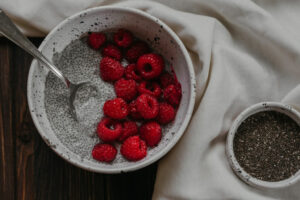George Orwell, a renowned English author, shared his meticulous tea-making regimen in a 1946 piece titled “A Nice Cup of Tea.” Here’s an updated exploration of Orwell’s tea-making principles, ensuring a perfect brew.
Tea Selection
Orwell emphasized the significance of using Indian or Sri Lankan teas for their stimulating qualities, advising against cheaper variants. While acknowledging the excellence of Chinese tea, he debunked the belief that it possessed specific transformative qualities.
Choosing the Right Teapot and Preheating Techniques
Orwell advocated for a small china or earthenware teapot, asserting that metal or enamel-coated teapots compromised the quality of the brew due to excessive water usage. Additionally, he highlighted the importance of preheating the teapot, favoring the use of the stove’s rear hob.
Preheating
Preheating the teapot, a traditional practice, aims to prevent damage to delicate china and intensify flavor. However, modernized manufacturing processes and indoor heating have diminished the temperature differential’s significance. Today, most opt for simply pouring boiling water into the pot before brewing.
Debates on Preheating
The debate on preheating’s impact on tea flavor continues. While some believe it enhances the flavor of black teas by maintaining higher steeping temperatures, others argue it might detract from lighter teas’ delicate taste. The opinions vary, remaining subjective in the tea community.
Optimal Caffeine Content
Orwell stressed the importance of ample caffeine in tea, despite rationing during Britain’s tea scarcity in his time. His recommendation of around six heaping teaspoons per quart pot reflected his preference for robustly brewed tea, challenging the notion of weaker infusions.
Loose Leaf Brewing
Orwell emphasized the necessity of allowing tea leaves to flow freely in the teapot for proper infusion. Dismissing concerns about ingesting tea leaves, he asserted its safety in substantial amounts, promoting a loose leaf approach for an optimal brew.
Revisiting Orwell’s Insights
Orwell’s instructions offer a timeless guide to tea-making, yet practicality and subjective preferences play vital roles. Modern adaptations, considering convenience and evolving tastes, harmonize with his principles while acknowledging the diverse perspectives within the tea community.
Debatable Teas
Boiling or Below?
The clash of opinions on water temperature for tea brewing reverberates among aficionados. Orwell’s preference for boiling water clashes with the argument advocating slightly cooler temperatures—just below boiling—to preserve nuanced flavors in select teas. The debate orbits around extracting maximum flavor without tipping the balance towards bitterness, echoing the complexity of tea’s brewing science.
Short and Strong vs. Long and Subtle
Orwell’s pursuit of a robust cup of tea confronts the trend favoring longer steeping times for nuanced flavors. The discourse questions whether a short, strong steeping delivers a more potent cup or if a longer, gentler infusion unveils subtler notes. This teeters between tea’s boldness and its subtle complexities, reflecting diverse tastes in tea appreciation.
Whole Leaf vs. Broken or Crushed
The debate intensifies over the impact of tea leaf size on the brew. Whole leaf proponents argue for enhanced flavor retention, while advocates for broken/crushed leaves highlight faster, even infusions. This discussion unfurls the intricacies of leaf processing and its profound influence on the resulting brew, challenging notions of tea leaf superiority.
Etiquette or Taste?
The age-old conundrum of adding milk before or after tea pouring leads a dance between tradition and taste. Orwell’s stance on adding milk last clashes with the practice of adding milk first, purportedly to protect delicate china. Debaters argue over taste preference, cultural nuances, and the underlying etiquette, reflecting divergent tea-drinking customs.
Sugar in Tea: Necessity or Sacrilege?
Orwell’s silence on sugar in tea stirs a pot of debate over its virtues or vices. Some decry sugar’s masking effect on natural flavors, while others champion its role in balancing bitterness or augmenting specific tea profiles. This heated discourse traverses personal taste, cultural influences, and the essence of pure tea appreciation.
Teas That Are Worth Trying
Assam Tea
Assam tea, hailing from the Assam region in India, boasts a bold, malty flavor profile. Renowned for its briskness and strong, rich taste, Assam tea is a go-to choice for those seeking a robust morning brew. Its full-bodied nature pairs perfectly with milk and sugar, making it a staple in classic English breakfast blends.
Darjeeling Tea
Known as the “Champagne of Teas,” Darjeeling tea originates from the Darjeeling district in India. This tea variety offers delicate, floral notes and a light-bodied infusion. With a nuanced flavor reminiscent of muscat grapes and a slight astringency, Darjeeling tea caters to those seeking a more refined and nuanced tea experience.
Oolong Tea
Oolong tea, partially oxidized, strikes a harmonious balance between green and black teas. Its diverse flavor spectrum ranges from floral and fruity to woody and roasted, depending on the oxidation level. This versatile tea type offers a delightful complexity, making it a favorite among tea enthusiasts seeking diverse taste experiences.
Pu-erh Tea
Pu-erh tea, originating from China’s Yunnan province, is celebrated for its unique fermentation process and distinct earthy flavor. Known for improving with age, Pu-erh develops a mellow and smooth taste, often described as rich, earthy, and sometimes with hints of mustiness. Its aged elegance appeals to those intrigued by its storied history and evolving taste.
Sencha Tea
Sencha, a staple in Japanese tea culture, offers a vibrant and invigorating brew. Recognized for its fresh, grassy notes and a pleasantly astringent taste, Sencha is a steamed green tea that retains its vivid green color and rejuvenating properties. Its refreshing qualities make it a popular choice for daily indulgence.
Health Benefits Of Tea
- Tea, rich in polyphenols, offers potent antioxidant properties, combating oxidative stress and reducing cell damage.
- Abundant in green tea, catechins are linked to improved heart health, reduced risk of certain cancers, and aiding in weight management.
- Tea’s caffeine content, paired with L-theanine, fosters alertness, mental clarity, and improved cognitive function without the jittery effects often associated with coffee.
- Regular tea consumption, particularly black and green tea, is associated with lower risks of heart disease, stroke, and improved cholesterol levels.
- The combination of caffeine and catechins in tea may elevate metabolism, aiding in fat oxidation and supporting weight loss efforts.
- Tea, particularly herbal varieties like peppermint or ginger, soothes the digestive tract, alleviates discomfort, and may aid in easing indigestion or nausea.
- Tea’s flavonoids and antimicrobial properties fortify the immune system, offering defense against infections and promoting overall well-being.
- Tea consumption, especially green tea, may contribute to improved bone mineral density, reducing the risk of osteoporosis and enhancing skeletal health.
- Tea’s L-theanine content induces relaxation, reduces stress, and promotes a calm mental state, fostering a tranquil demeanor.
- Compounds in tea, particularly green tea, exhibit antibacterial properties, reducing oral bacteria and supporting dental health by preventing cavities and gum disease.
- Despite the caffeine content, tea hydrates the body, contributing to overall hydration levels and aiding in maintaining vitality throughout the day.

Dating apps like Tinder, Bumble, and Hinge changed the way people meet, making it faster…

Even if you don’t suffer from an intolerance to gluten, going gluten-free has become a…

Looking to revitalize your fitness journey? Dive into a world of transformative workouts and expert…




